As you walk through the woodlands of Illinois, you may hear a faint buzzing sound nearby.
As you approach the source of the noise, you may be greeted by a tiny and colorful creature, hovering in mid-air with its wings flapping at a dizzying speed.
These are the hummingbirds of Illinois – a group of six unique species that are as elusive as they are fascinating.
In this article, we’ll take a closer look at these tiny birds and uncover some of their secrets, from their distinctive appearances to their remarkable behaviors.
So, get ready to delve into the world of these jewel-like birds and discover what makes them truly remarkable.
| Image | Name |
|---|---|
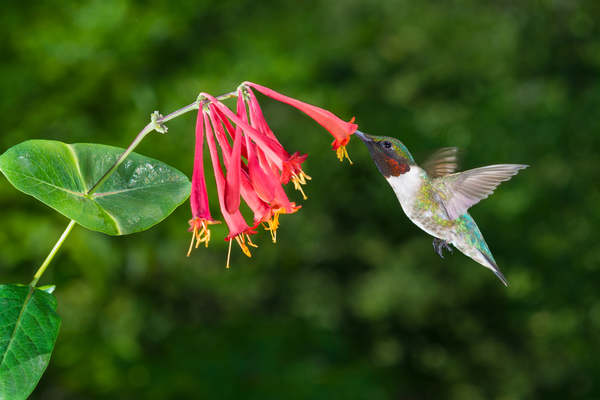 | Ruby-throated Hummingbird |
 | Rufous Hummingbird |
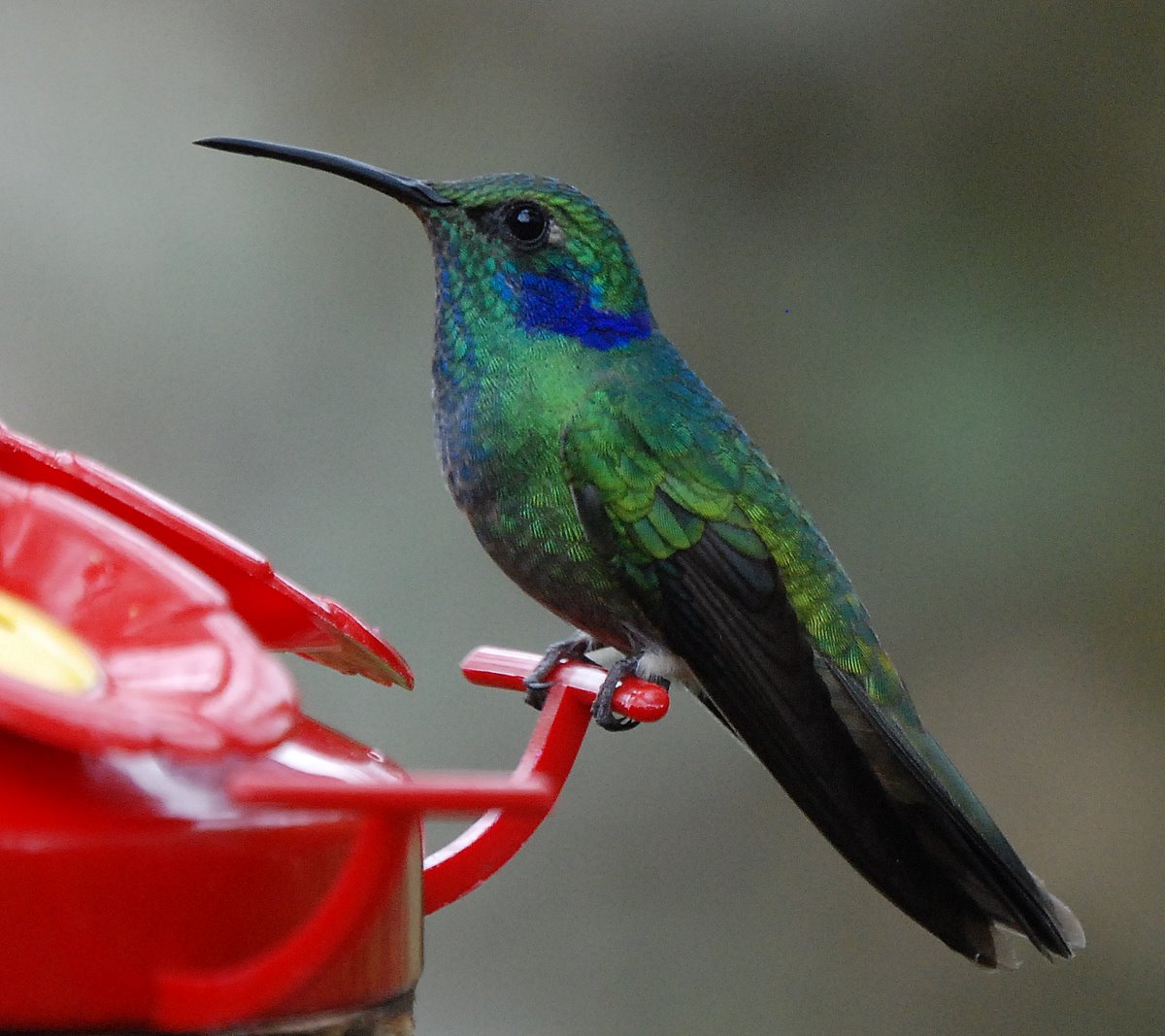 | Mexican Violetear |
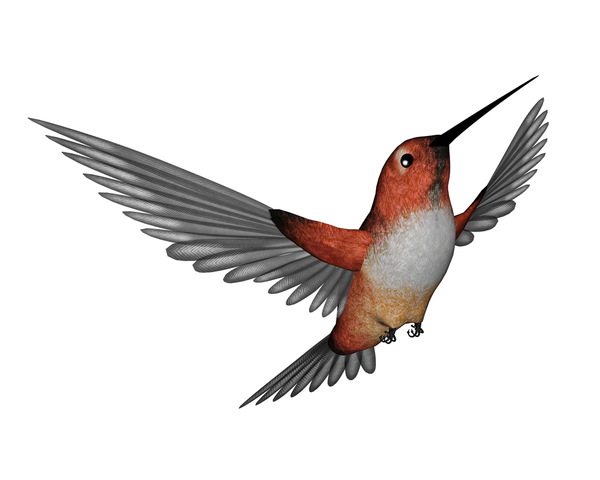 | Allen's Hummingbird |
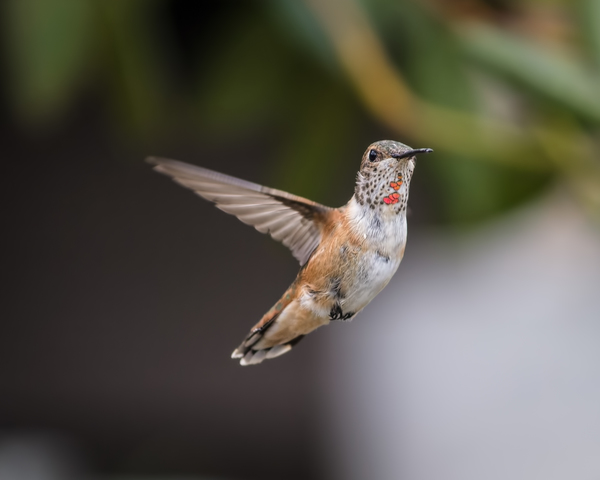 | Anna's Hummingbird |
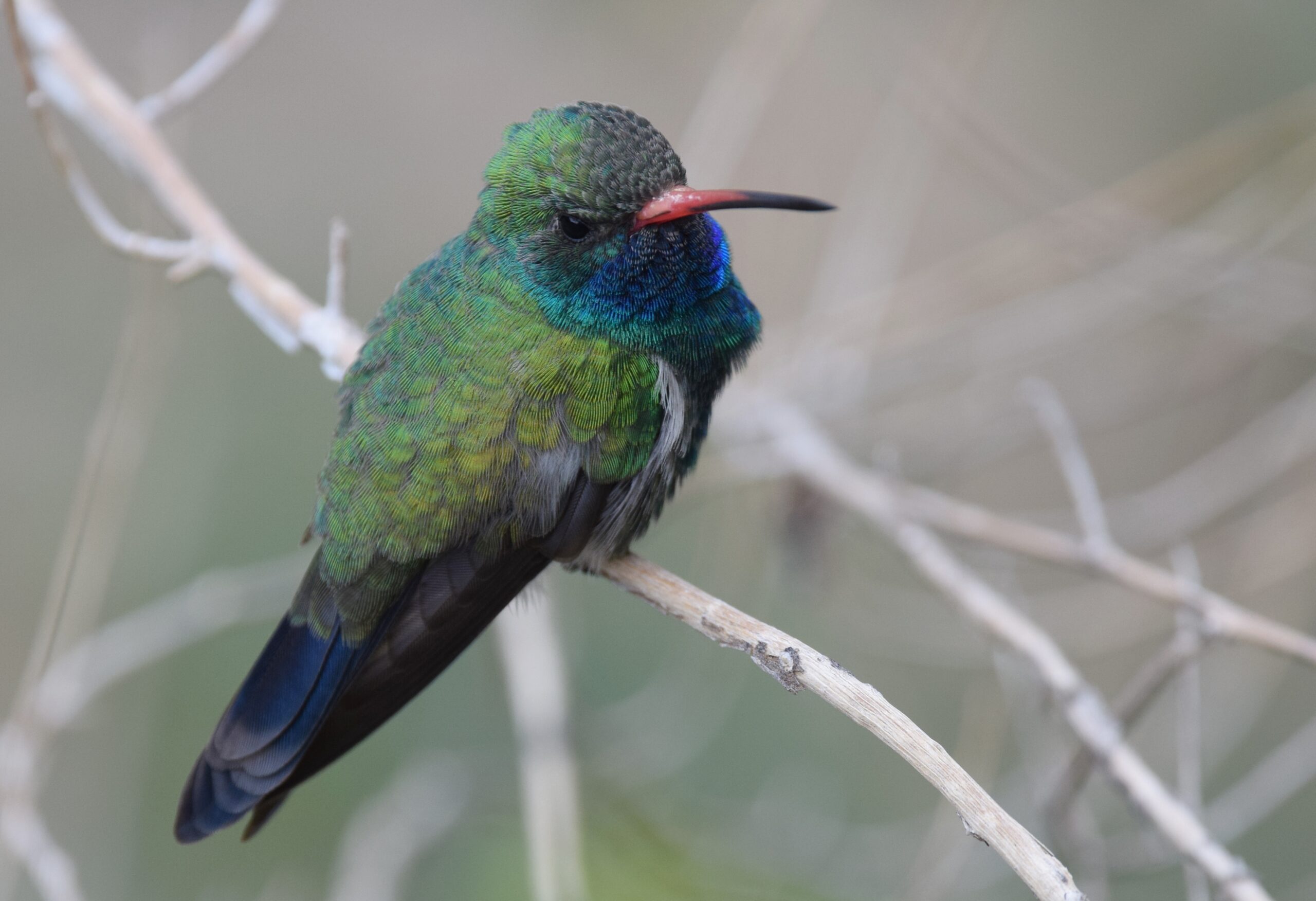 | Broad-billed Hummingbird |
Types of Hummingbirds in Illinois
1. Ruby-throated Hummingbird

The Ruby-throated Hummingbird is a frequent resident of Illinois throughout the summer months, and its arrival in the state typically begins in April but is concentrated mostly in May.
The males typically come 1 to 2 weeks prior to the females. Sometimes they arrive much earlier.
The autumn migratory season typically runs from September to around the middle of October; however, some animals stay in one place until as late as December.
Ruby-throated Hummingbirds have a brilliant green back and head and a grayish-white underside, and the males have an iridescent red throat.
The females have a grayish-white underbelly.
Female Ruby-throated Hummingbirds have a green back and a white underside, while their crowns and sides are chestnut.
The Ruby-throated Hummingbird is the sole species of hummingbird that breeds in the eastern part of North America.
After breeding, the Ruby-throated Hummingbird migrates farther south to Central America.
Some go north across the Gulf of Mexico, while others move north into Texas and along the coast there.
They begin to arrive in the deep south in the month of February, but they may not make it to Canada and northern states till May in order to reproduce.
September and August mark the beginning of their migration southward.
These little birds may be seen zipping from one source of nectar to the next, as well as catching insects in midair or off spider webs.
They do not walk but rather shuffle along a perch since their legs are just so short that they are unable to stand for any length of time.
When going outside, the ideal locations to look for them are flower beds or the margins of wooded areas in the summer.
In addition, you’ll often see them in town, particularly at nectar feeders.
Male Ruby-throated Hummingbirds have a reputation for being particularly abrasive in their protection of the flowers and feeders they use.
After mating, they do not remain in the area for an extended period of time and are likely to move by early August.
The thistle or dandelion down that is used in the construction of ruby-throated female nests is bound together by spider silk.
The nests are built by ruby-throated females on slender twigs.
They produce one to three very little eggs that are only 0.6 inches in length (1.4 cm)
2. Rufous Hummingbird

Rufous Hummingbirds are not particularly frequent in Illinois, but each year there are a few individuals that travel this far north over the winter.
They are most often seen in and around Chicago.
A compelling argument for retaining year-round access to your hummingbird feeders.
The back and belly of a Rufous Hummingbird are a brilliant orange color, and males have an iridescent red throat along with a white patch below their throats.
The females have a pale belly and a back that is a greenish-brown tint with rusty coloring on the sides of the body.
The Rufous Hummingbird is among the birds that migrate the furthest for its size, covering up to 4,000 kilometers in each direction during its annual journey.
They go south to the Gulf Coast and Mexico to spend the winters.
Their breeding grounds are in northwest Alaska.
They begin their journey north along the Pacific Coast in the springtime and continue it along the Rocky Mountains in the mid-summer and fall.
Rufous Hummingbirds get the majority of their nutrition from the nectar of colorful tubular flowers as well as small insects like flies, gnats, and midges.
They construct a cozy home among the branches of tall trees, utilizing plant down and spider webs as binding materials.
They produce two to three very little white eggs that are around half an inch (1.3 centimeters) in length.
They are quite aggressive and will drive away any other hummingbirds which may approach, including resident hummingbirds and bigger hummingbirds, even when they are migrating.
During migration, they won’t stick around for very long and will drive away most of the other hummingbirds if they have the opportunity.
They spend the winter months in the forests and woodlands of the mountains, where they may be seen throughout the summer months.
3. Mexican Violetear
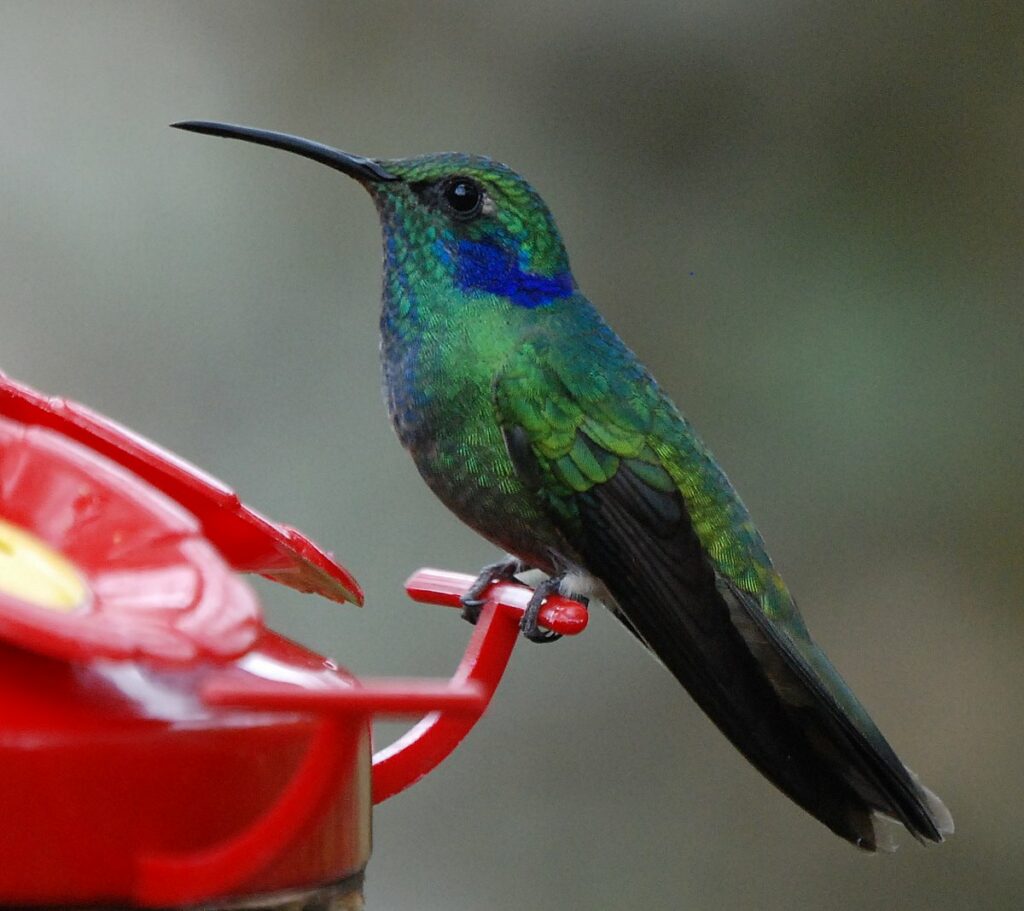
Certain non-breeding Mexican Violetears can migrate north further into the United States, most typically to Texas, although some have been seen as far north as Michigan and Illinois, however very seldom.
Texas is the most common destination for these migrant birds.
They were documented in the state of Illinois a decade ago. Therefore, there is not much of a chance of their being here.
Hummingbirds of medium size, Mexican Violetears have a metallic green color with violet spots on the sides of their chests and heads.
They are found throughout Mexico.
The males are somewhat bigger and brighter than the ladies, but otherwise, they are identical.
Mexican Violetears are most often seen breeding in the woods of Nicaragua, Mexico, and Central America.
However, they have been spotted as far south as the highlands of Venezuela and Bolivia.
Find out how to entice hummingbirds with different kinds of flowers and plants. Also, instructions for making your fresh sugar water at home.
4. Allen’s Hummingbird

Accidental hummingbirds of Allen’s species have been noticed in Illinois a few times during the winter, but they’ve not been reported in the state in the last ten years.
Since Allen’s Hummingbirds and Rufous Hummingbirds have extremely similar appearances, it may be difficult to tell them apart in the thin strip of coastal scrub and woodland that both species call home across California and Oregon.
Male Allen’s Hummingbirds have necks that are iridescent and reddish-orange in color, and their abdomen, tails, and eye spots are all orange.
Both the males and females possess long, straight bills, and their backs have a coppery-green hue; however, the females do not have brilliant coloration on their throats.
The Allen’s Hummingbird, on the other hand, has outer tail plumage that is more narrowly spaced than those of the Rufous Hummingbird.
They construct their nests at an arbitrary height close to shaded streams and may raise up to three broods each year.
Allen’s Hummingbirds spend their entire winter throughout Mexico and begin their migration north to the Pacific Coast across California and Oregon as early as January.
However, you are most likely to see one of these birds between the months of March and July.
Some continue to live in central Mexico, while others are based in or near Los Angeles.
5. Anna’s Hummingbird

Anna’s Hummingbirds, an incidental species of hummingbird inhabiting Illinois, have only been seen a few times in the state during the winter near Chicago.
Anna’s Hummingbirds are dainty birds that are primarily greenish and grayish in coloration.
The head and neck of the male are an iridescent reddish-pink color, while the throat of the female is grey in color with traces of red spotting.
In a rare occurrences, Anna’s Hummingbirds might not even migrate; however, some may travel shorter distances during the winter.
They are the most widespread species of hummingbird found along the Pacific Coast.
During the courting process, they do a spectacular dive performance in which the males ascend up to a height of 132 feet in the air before performing a rapid descent to the ground while making a loud noise with their tail plumage.
Anna’s hummingbirds may be spotted in a variety of environments, including scrub and savannah, in addition to the typical parks and gardens that include huge, colorful flowers and nectar feeders.
Nests of Anna’s Hummingbirds are typically found in trees at heights between 7 to 21 feet, and the females of the species typically have two to three broods each year.
6. Broad-billed Hummingbird
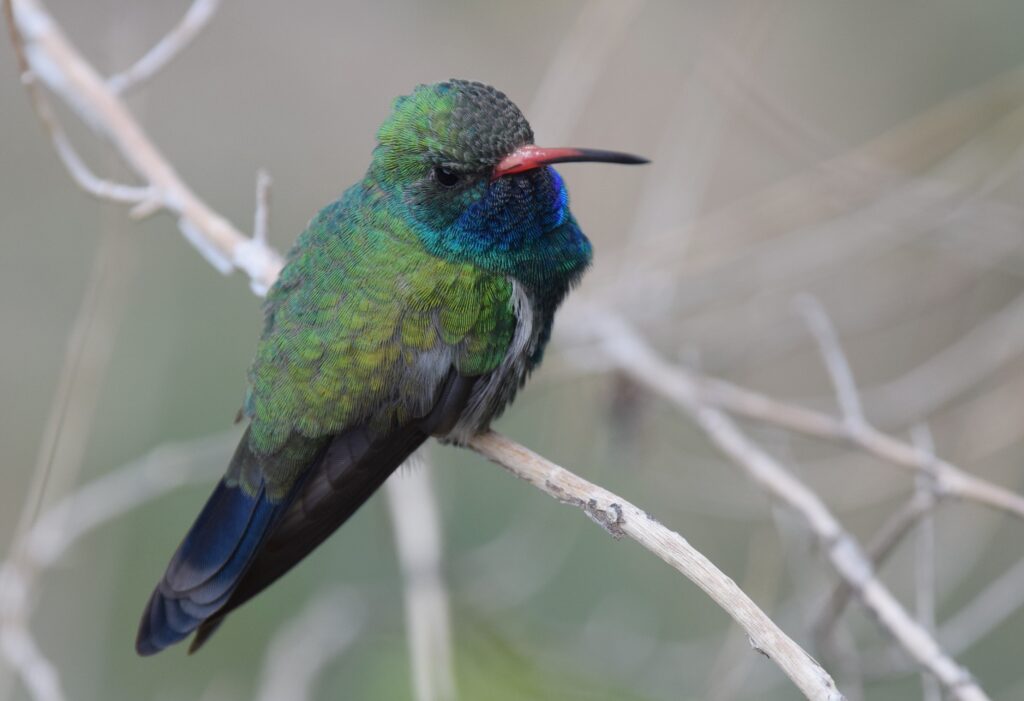
The Broad-billed Hummingbird is a rare species of hummingbird that was discovered in Illinois.
In the whole state of Illinois, the Hummingbird has only been observed on a few occasions close to Peoria, Chicago, and Springfield.
Broad-billed hummingbirds have the most vibrant colors.
The males have a deep, metallic green color all throughout, and they have a blue neck and chest that continues down into the belly.
The bellies of females are white, and both males and females possess dark-tipped, red beaks that are broad near their heads and taper to a point.
Broad-billed Central Mexico and the Pacific Coast of Mexico are both permanent homes for a variety of hummingbird species.
A small number of birds choose to spend the whole year in the area close to the border with Mexico, while others go to the northern mountain canyons of New Mexico and southern Arizona in order to mate.
Broad-billed Hummingbirds find the best food in canyon streams and mountain meadows; however, they’ll also eat at feeders in your garden if you put out nectar and sugar water.
Near streams, nests are often constructed at a height of approximately 4 feet from the ground.
Conclusion
In conclusion, the six types of hummingbirds found in Illinois are true wonders of nature.
From the Ruby-throated Hummingbird’s bright red throat to the Rufous Hummingbird’s impressive migration, these tiny birds never cease to amaze.
Their acrobatic flight, lightning-fast movements, and distinctive characteristics make them a beloved sight for birdwatchers and nature lovers alike.
As we continue to explore and appreciate the beauty of these fascinating creatures, let us also remember to protect their habitats and ensure their survival for generations to come.
With our efforts, we can help ensure that the hummingbirds of Illinois continue to thrive and enchant us with their grace and beauty.
FAQ
When is the best time to see hummingbirds in Illinois?
The best time to see hummingbirds in Illinois is during their migration season, which is usually in the late spring and early fall. The Ruby-throated Hummingbird is the most common species seen in Illinois during these times.
What do hummingbirds eat in Illinois?
Hummingbirds in Illinois feed mainly on nectar from flowers, but they also eat small insects and spiders to supplement their diet.
What is the smallest species of hummingbird found in Illinois?
The smallest species of hummingbird found in Illinois is the Calliope Hummingbird, which is only about 3 inches long and weighs less than a nickel.
How can I attract hummingbirds to my yard in Illinois?
To attract hummingbirds to your yard in Illinois, you can plant native flowers that produce nectar, such as bee balm, cardinal flower, and columbine. You can also provide hummingbird feeders filled with a mixture of sugar and water.
Are hummingbirds endangered in Illinois?
While hummingbirds are not currently considered endangered in Illinois, their populations can be affected by habitat loss and other environmental factors. It’s important to protect their habitats and food sources to ensure their continued survival.
Last Updated on March 22, 2023 by Lily Aldrin
